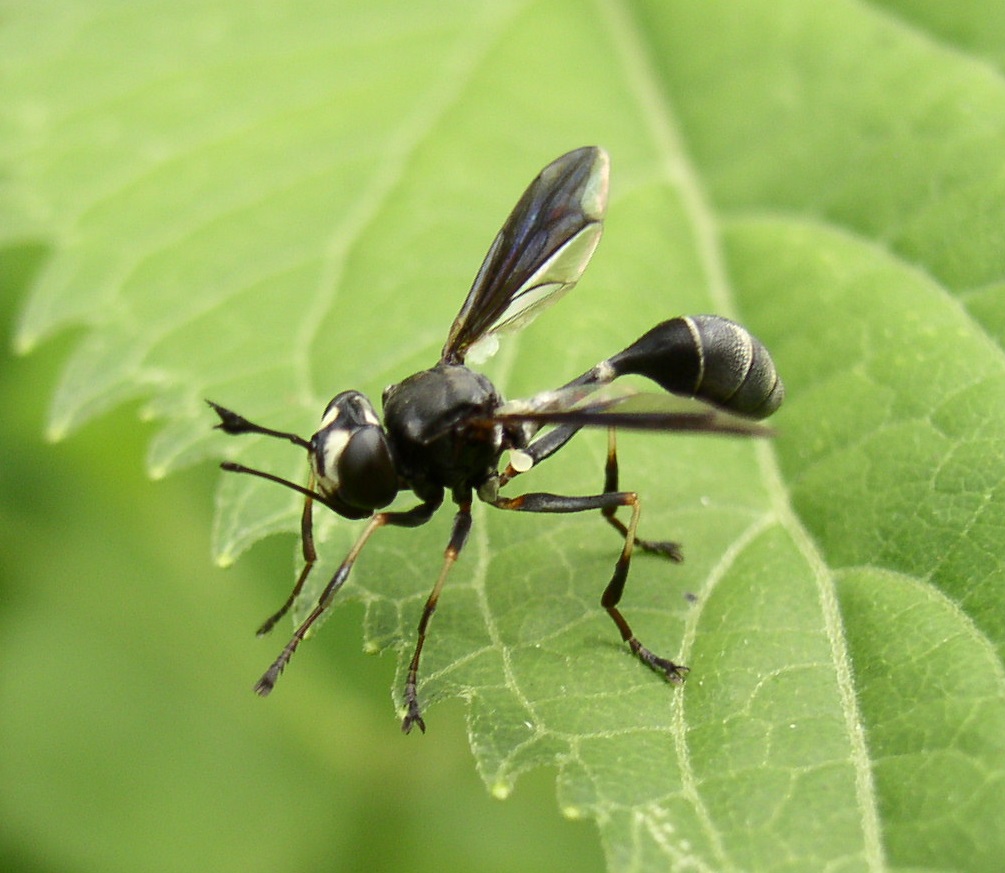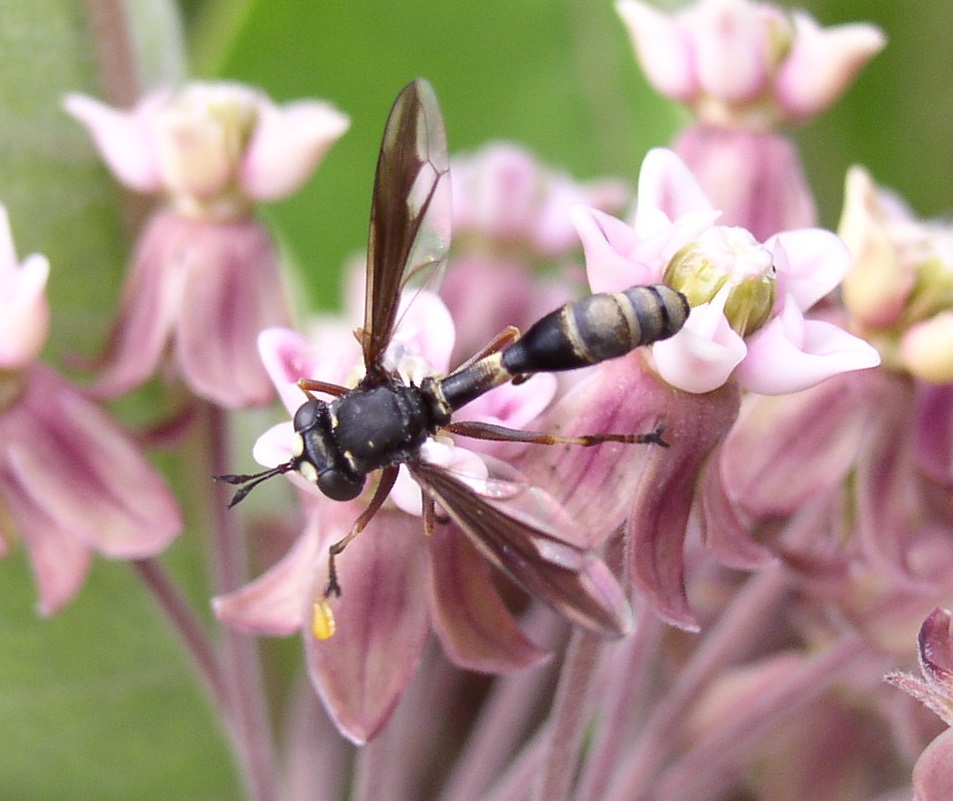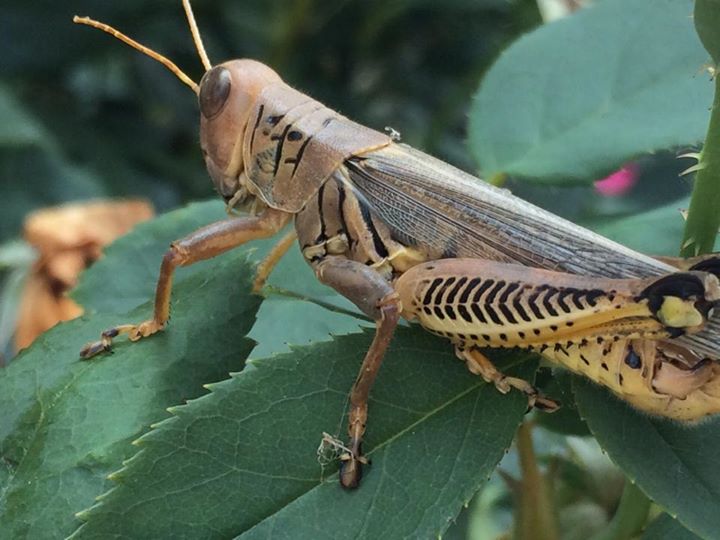|
Physocephala Tibialis
''Physocephala tibialis'' is a species of thick-headed fly (family Conopidae) found throughout the eastern United States, often near flowering plants. The adult fly is primarily black with a yellow face and thin white stripes on the abdomen. It is commonly found along the east coast of the United States and is often found near flowering plants. ''P. tibialis'' flies parasitize many different species of bees by laying their eggs inside the abdomen of their host. The larva hatches inside of the host and grows and develops until it takes up the majority of the host's abdomen. The host then dies and the larva envelopes itself in a puparium and pupates inside of the corpse. After an extended period of pupation, the adult emerges from the corpse of the host bee. When a bee becomes parasitized by a ''P. tibialis'' larva, certain behaviors such as induced grave digging and changes in flower preference often occur. Geographic distribution ''P. tibialis'' is found in North America, primari ... [...More Info...] [...Related Items...] OR: [Wikipedia] [Google] [Baidu] |
Thomas Say
Thomas Say (June 27, 1787 – October 10, 1834) was an American entomologist, conchologist, and Herpetology, herpetologist. His studies of insects and shells, numerous contributions to scientific journals, and scientific expeditions to Florida, Georgia, the Rocky Mountains, Mexico, and elsewhere made him an internationally known naturalist. Say has been called the father of American descriptive entomology and American conchology. He served as librarian for the Academy of Natural Sciences of Philadelphia, curator at the American Philosophical Society (elected in 1817), and professor of natural history at the University of Pennsylvania. Early life and education Born in Philadelphia into a prominent Religious Society of Friends, Quaker family, Thomas Say was the great-grandson of John Bartram, and the great-nephew of William Bartram. His father, Dr. Benjamin Say, was brother-in-law to another Bartram son, Moses Bartram. The Say family had a house, "The Cliffs" at Gray's Ferry Bridge, ... [...More Info...] [...Related Items...] OR: [Wikipedia] [Google] [Baidu] |
Puparium
A pupa ( la, pupa, "doll"; plural: ''pupae'') is the life stage of some insects undergoing transformation between immature and mature stages. Insects that go through a pupal stage are holometabolous: they go through four distinct stages in their life cycle, the stages thereof being egg, larva, pupa, and imago. The processes of entering and completing the pupal stage are controlled by the insect's hormones, especially juvenile hormone, prothoracicotropic hormone, and ecdysone. The act of becoming a pupa is called pupation, and the act of emerging from the pupal case is called eclosion or emergence. The pupae of different groups of insects have different names such as ''chrysalis'' for the pupae of butterflies and ''tumbler'' for those of the mosquito family. Pupae may further be enclosed in other structures such as cocoons, nests, or shells. Position in life cycle The pupal stage follows the larval stage and precedes adulthood (''imago'') in insects with complete metamorphosis ... [...More Info...] [...Related Items...] OR: [Wikipedia] [Google] [Baidu] |
Bumblebee
A bumblebee (or bumble bee, bumble-bee, or humble-bee) is any of over 250 species in the genus ''Bombus'', part of Apidae, one of the bee families. This genus is the only extant group in the tribe Bombini, though a few extinct related genera (e.g., ''Calyptapis'') are known from fossils. They are found primarily in higher altitudes or latitudes in the Northern Hemisphere, although they are also found in South America, where a few lowland tropical species have been identified. European bumblebees have also been introduced to New Zealand and Tasmania. Female bumblebees can sting repeatedly, but generally ignore humans and other animals. Most bumblebees are social insects that form colonies with a single queen. The colonies are smaller than those of honey bees, growing to as few as 50 individuals in a nest. Cuckoo bumblebees are brood parasitic and do not make nests or form colonies; their queens aggressively invade the nests of other bumblebee species, kill the resident queen ... [...More Info...] [...Related Items...] OR: [Wikipedia] [Google] [Baidu] |
Bumblebee October 2007-3
A bumblebee (or bumble bee, bumble-bee, or humble-bee) is any of over 250 species in the genus ''Bombus'', part of Apidae, one of the bee families. This genus is the only extant group in the tribe Bombini, though a few extinct related genera (e.g., '' Calyptapis'') are known from fossils. They are found primarily in higher altitudes or latitudes in the Northern Hemisphere, although they are also found in South America, where a few lowland tropical species have been identified. European bumblebees have also been introduced to New Zealand and Tasmania. Female bumblebees can sting repeatedly, but generally ignore humans and other animals. Most bumblebees are social insects that form colonies with a single queen. The colonies are smaller than those of honey bees, growing to as few as 50 individuals in a nest. Cuckoo bumblebees are brood parasitic and do not make nests or form colonies; their queens aggressively invade the nests of other bumblebee species, kill the reside ... [...More Info...] [...Related Items...] OR: [Wikipedia] [Google] [Baidu] |
Physocephala Tibialis Female
''Physocephala'' is a genus of flies from the family Conopidae. Species *'' P. antiqua'' (Wiedemann, 1830) *'' P. biguttata'' von Röder, 1883 *'' P. burgessi'' (Williston, 1882) *'' P. chrysorrhoea'' ( Meigen, 1824) *'' P. curticornis'' Kröber, 1915 *'' P. floridana'' Camras, 1957 *'' P. furcillata'' (Williston, 1882) *'' P. lacera'' ( Meigen, 1824) *'' P. laeta'' Becker, 1913 *'' P. laticincta'' (Brullé, 1832) *'' P. marginata'' ( Say, 1823) *'' P. nervosa'' Krober, 1915 *'' P. nigra'' (De Geer, 1776) *'' P. pusilla'' ( Meigen, 1824) *'' P. rufipes'' (Fabricius, 1781) *'' P. sagittaria'' ( Say, 1823) *'' P. texana'' (Williston, 1882) *''P. tibialis'' ( Say, 1829) *'' P. truncata'' ( Loew, 1847) *'' P. vaginalis'' ( Rondani, 1865) *'' P. variegata'' ( Meigen, 1824) *'' P. vittata'' (Fabricius Fabricius ( la, smith, german: Schmied, Schmidt) is a surname. Notable people with the surname include: *people from the Ancient Roman gens Fabricia: **Gaius Fabricius Luscinus ... [...More Info...] [...Related Items...] OR: [Wikipedia] [Google] [Baidu] |
Overwintering
Overwintering is the process by which some organisms pass through or wait out the winter season, or pass through that period of the year when "winter" conditions (cold or sub-zero temperatures, ice, snow, limited food supplies) make normal activity or even survival difficult or near impossible. In some cases "winter" is characterized not necessarily by cold but by dry conditions; passing through such periods could likewise be called overwintering. Hibernation and migration are the two major ways in which overwintering is accomplished. Animals may also go into a state of reduced physiological activity known as torpor. Overwintering occurs in several classes of lifeform. Insects In entomology, overwintering is how an insect passes the winter season. Many insects overwinter as adults, pupae, or eggs. This can be done inside buildings, under tree bark, or beneath fallen leaves or other plant matter on the ground, among other places. All such overwintering sites shield the insect fr ... [...More Info...] [...Related Items...] OR: [Wikipedia] [Google] [Baidu] |
Hemolymph
Hemolymph, or haemolymph, is a fluid, analogous to the blood in vertebrates, that circulates in the interior of the arthropod (invertebrate) body, remaining in direct contact with the animal's tissues. It is composed of a fluid plasma in which hemolymph cells called hemocytes are suspended. In addition to hemocytes, the plasma also contains many chemicals. It is the major tissue type of the open circulatory system characteristic of arthropods (e.g. arachnids, crustaceans and insects). In addition, some non-arthropods such as molluscs possess a hemolymphatic circulatory system. Oxygen-transport systems were long thought unnecessary in insects, but ancestral and functional hemocyanin has been found in the hemolymph. Insect "blood" generally does not carry hemoglobin, although hemoglobin may be present in the tracheal system instead and play some role in respiration. Method of transport In the grasshopper, the closed portion of the system consists of tubular hearts and an aort ... [...More Info...] [...Related Items...] OR: [Wikipedia] [Google] [Baidu] |
Hymenoptera
Hymenoptera is a large order (biology), order of insects, comprising the sawfly, sawflies, wasps, bees, and ants. Over 150,000 living species of Hymenoptera have been described, in addition to over 2,000 extinct ones. Many of the species are Parasitoid wasp, parasitic. Females typically have a special ovipositor for inserting eggs into hosts or places that are otherwise inaccessible. This ovipositor is often modified into a stinger. The young develop through holometabolism (complete metamorphosis (biology), metamorphosis)—that is, they have a wormlike larval stage and an inactive pupal stage before they mature. Etymology The name Hymenoptera refers to the wings of the insects, but the original derivation is ambiguous. All references agree that the derivation involves the Ancient Greek language, Ancient Greek wikt:πτερόν, πτερόν (''pteron'') for wing. The Ancient Greek wikt:ὑμήν, ὑμήν (''hymen'') for membrane provides a plausible etymology for the term bec ... [...More Info...] [...Related Items...] OR: [Wikipedia] [Google] [Baidu] |
Instar
An instar (, from the Latin '' īnstar'', "form", "likeness") is a developmental stage of arthropods, such as insects, between each moult (''ecdysis''), until sexual maturity is reached. Arthropods must shed the exoskeleton in order to grow or assume a new form. Differences between instars can often be seen in altered body proportions, colors, patterns, changes in the number of body segments or head width. After shedding their exoskeleton (moulting), the juvenile arthropods continue in their life cycle until they either pupate or moult again. The instar period of growth is fixed; however, in some insects, like the salvinia stem-borer moth, the number of instars depends on early larval nutrition. Some arthropods can continue to moult after sexual maturity, but the stages between these subsequent moults are generally not called instars. For most insect species, an ''instar'' is the developmental stage of the larval forms of holometabolous (complete metamorphism) or nymphal forms o ... [...More Info...] [...Related Items...] OR: [Wikipedia] [Google] [Baidu] |
Ptilinum
The ptilinum is an eversible pouch on the head, above the base of the antenna in schizophoran flies (a section of muscomorphan and cyclorrhaphan flies). It is used to force off the end of the puparium A pupa ( la, pupa, "doll"; plural: ''pupae'') is the life stage of some insects undergoing transformation between immature and mature stages. Insects that go through a pupal stage are holometabolous: they go through four distinct stages in their ... in order for the fly to emerge, and after this inflation at emergence, the ptilinum collapses back inside the head, marked thereafter only by the ptilinal suture or frontal suture (which defines the aperture through which it everts). References Bugguide.net. ptilinum, ptilinal suture Insect anatomy {{insect-anatomy-stub ... [...More Info...] [...Related Items...] OR: [Wikipedia] [Google] [Baidu] |
Thick-headed Fly
The Conopidae, usually known as the thick-headed flies, are a family of flies within the Brachycera suborder of Diptera, and the sole member of the superfamily Conopoidea. Flies of the family Conopidae are distributed worldwide in all the biogeographic realms except for the poles and many of the Pacific islands. About 800 species in 47 genera are described worldwide, about 70 of which are found in North America. The majority of conopids are black and yellow, or black and white, and often strikingly resemble wasps, bees, or flies of the family Syrphidae, themselves notable bee mimics. A conopid is most frequently found at flowers, feeding on nectar with its proboscis, which is often long. Description For terms see Morphology of Diptera. Rather thinly pilose or nearly bare, elongate or stout flies of small to large size (3–20 mm, usually 5–15 mm). They are often lustrous with a black and yellow colour pattern or with reddish brown markings. The head is broa ... [...More Info...] [...Related Items...] OR: [Wikipedia] [Google] [Baidu] |
Cross Vein
Insect wings are adult outgrowths of the insect exoskeleton that enable insects to fly. They are found on the second and third thoracic segments (the mesothorax and metathorax), and the two pairs are often referred to as the forewings and hindwings, respectively, though a few insects lack hindwings, even rudiments. The wings are strengthened by a number of longitudinal veins, which often have cross-connections that form closed "cells" in the membrane (extreme examples include the dragonflies and lacewings). The patterns resulting from the fusion and cross-connection of the wing veins are often diagnostic for different evolutionary lineages and can be used for identification to the family or even genus level in many orders of insects. Physically, some insects move their flight muscles directly, others indirectly. In insects with direct flight, the wing muscles directly attach to the wing base, so that a small downward movement of the wing base lifts the wing itself upwar ... [...More Info...] [...Related Items...] OR: [Wikipedia] [Google] [Baidu] |




_pristinus.jpg)





